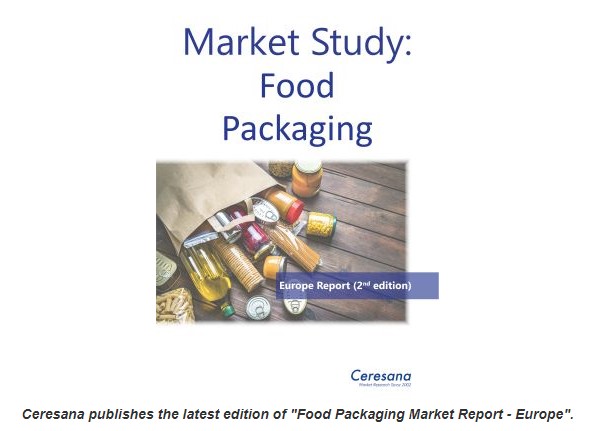Demand for food packaging in Europe to reach 41.7 million tonnes by 20…
main text
Demand for food packaging in Europe to reach 41.7 million tonnes by 2031
Ceresana, one of the world's leading market research institutes, stated that defying the trend, food retail revenues increased in many countries during the pandemic, as restaurants were closed and consumers had plenty of time to cook for themselves.
Now, people are increasingly cutting back on food to offset the burden of higher energy costs. However, demand for food packaging continues to grow, albeit at a slower pace and not in all areas.
For the second time, Ceresana has analyzed the European market for food packaging in all categories except beverages. The new study takes into account not only films, pouches, cans, tubes, jars and other primary packaging, but also secondary and transport packaging. The analysts expect total demand for food packaging in Europe to reach a volume of around 41.7 million tonnes by 2031.

More bioplastics, less glass
The various packaging materials and types of packaging are developing at different paces: while canned goods were hoarded during the lockdown, demand for metal packaging is now declining again. One exception, however, is tubes, the consumption of which is growing in many places.
Packaging that is considered environmentally friendly, such as bioplastics, but also paper bags and packaging made from recycled plastics, is particularly benefiting from the sustainability trend and the upswing in organic food.
In the case of packaging films and short-lived disposable food packaging, bioplastics score points with their biodegradability. Glass packaging, on the other hand, may have a green image, but the demand for container glass is nevertheless continuing to decline.
Convenience is important to producers and consumers alike: online retailing and shipping packaging are increasing demand for corrugated cardboard and the trend towards shelf-ready packaging favors food packaging made of paper and cardboard.
Innovative packaging, new technologies
Sales of fresh baked goods, fresh meat and fish are barely increasing. The strongest growth in the food market is currently being seen in breakfast cereals, ready meals, chilled and frozen foods.
Convenience products are a particular challenge for packaging manufacturers, because transport and storage times are becoming longer and longer, and with them the desired shelf-life periods - but at the same time, packaging should be attractive, practical and recyclable, whilst also being lighter and more cost-effective if possible.
The packaging industry is responding to the complex requirements with innovative materials and technologies: in order to further reduce packaging weight and the use of resources, stand-up pouches are being used in more and more areas.
The shelf life of food can be increased by changing the gas composition within the packaging. High-barrier films are required for modified atmosphere packaging (MAP). In the case of plastic films for primary packaging, Ceresana's market researchers are registering particularly strong growth in BOPET films.
Source : https://www.adsalecprj.com/en/news_show-79048.html
Edit : HANDLER
- PreviousMedical device packaging market to grow at CAGR of 10.16% 22.12.21
- NextPlastics machinery shipments drop, but up from 2021 22.11.20
